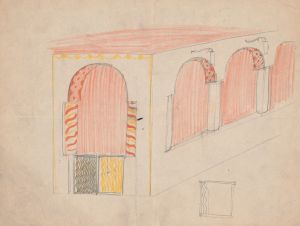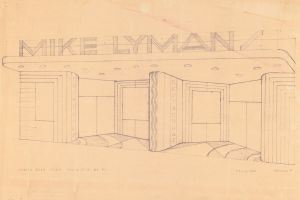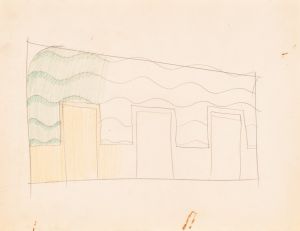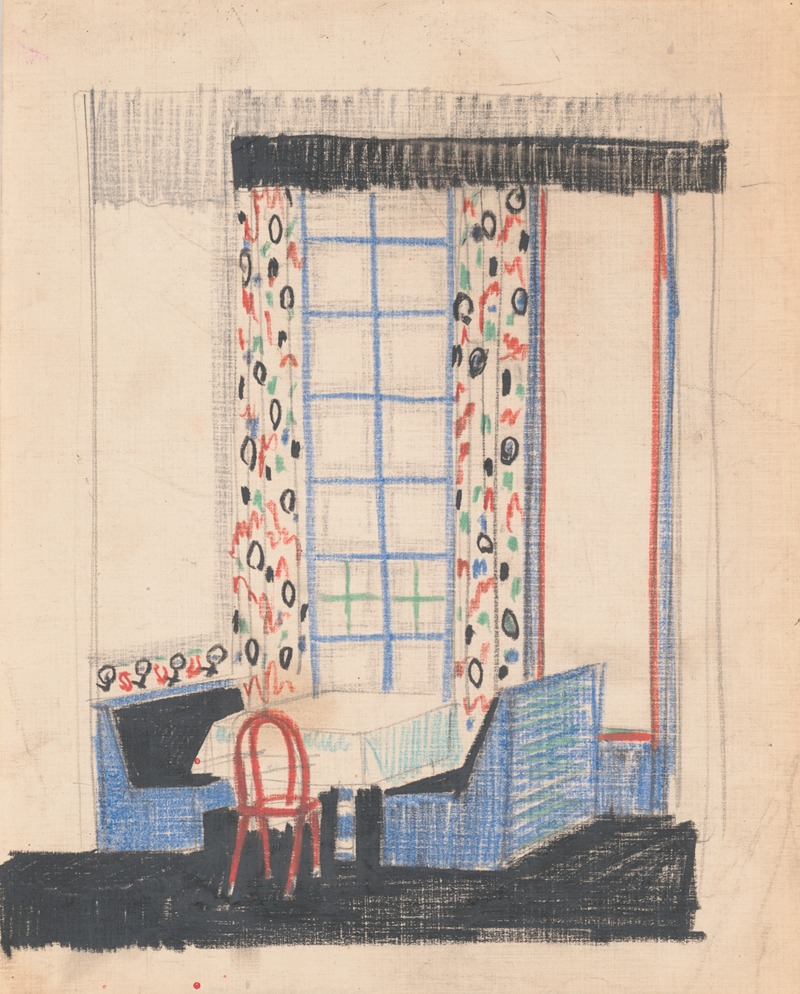
Interior perspective studies for a restaurant
A hand-painted replica of Winold Reiss’s masterpiece Interior perspective studies for a restaurant, meticulously crafted by professional artists to capture the true essence of the original. Each piece is created with museum-quality canvas and rare mineral pigments, carefully painted by experienced artists with delicate brushstrokes and rich, layered colors to perfectly recreate the texture of the original artwork. Unlike machine-printed reproductions, this hand-painted version brings the painting to life, infused with the artist’s emotions and skill in every stroke. Whether for personal collection or home decoration, it instantly elevates the artistic atmosphere of any space.
Winold Reiss (1886-1953) was a German-American artist known for his portraits, murals, and interior design work. One of his notable contributions to the field of interior design is his series of interior perspective studies for a restaurant. These studies showcase Reiss's ability to blend artistic creativity with functional design, reflecting his unique approach to commercial art and interior spaces.
Reiss was born in Karlsruhe, Germany, and studied at the Royal Academy of Fine Arts in Munich. He emigrated to the United States in 1913, where he quickly established himself as a versatile artist. His work spanned various mediums, including painting, drawing, and design. Reiss's background in fine arts and his interest in modernist aesthetics influenced his approach to interior design, making his work stand out in the early 20th century American art scene.
The interior perspective studies for a restaurant by Winold Reiss are a testament to his skill in creating visually appealing and functional spaces. These studies typically include detailed drawings and renderings that illustrate the layout, décor, and ambiance of the restaurant. Reiss's designs often featured bold colors, geometric patterns, and a harmonious blend of different artistic styles, reflecting his modernist sensibilities.
Reiss's work in interior design was not limited to restaurants; he also designed interiors for hotels, theaters, and other commercial spaces. His ability to create immersive environments that enhanced the overall experience of the space was highly regarded. The restaurant studies, in particular, demonstrate his attention to detail and his understanding of how design elements can influence the atmosphere and functionality of a dining establishment.
One of the key aspects of Reiss's interior perspective studies is his use of color and pattern. He often employed vibrant hues and intricate designs to create a dynamic and engaging environment. This approach was influenced by his background in fine arts and his exposure to various artistic movements, including Art Deco and Modernism. Reiss's use of color and pattern not only added visual interest to the space but also helped to define different areas within the restaurant, guiding the flow of movement and enhancing the dining experience.
Reiss's interior perspective studies also highlight his ability to integrate different materials and textures into his designs. He often combined traditional materials, such as wood and metal, with more unconventional elements, like glass and ceramics. This eclectic mix of materials added depth and richness to his interiors, creating a unique and inviting atmosphere.
In addition to his technical skills, Reiss's interior perspective studies reflect his understanding of the social and cultural context of the spaces he designed. He was keenly aware of the importance of creating environments that were not only aesthetically pleasing but also functional and comfortable for patrons. His designs often incorporated elements that catered to the specific needs and preferences of the clientele, ensuring that the space was both practical and enjoyable.
Overall, Winold Reiss's interior perspective studies for a restaurant exemplify his talent as an artist and designer. His ability to blend artistic creativity with practical design solutions resulted in spaces that were both beautiful and functional. Reiss's work continues to be celebrated for its innovative approach and its contribution to the field of interior design.






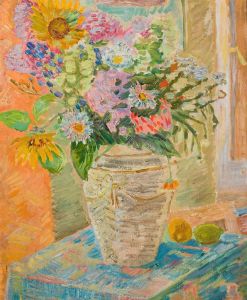

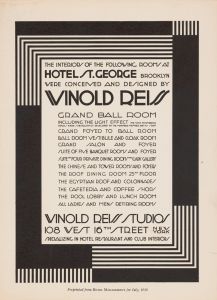
![Designs for the Puck Theater , New York, NY.] [Exterior perspective study..](/imgs/249325/s/winold-reiss-designs-for-the-puck-theater-new-york-ny-exterior-perspective-study-aba2fbab.jpg)
![Drawings for proposed redecorations of Yorketowne Coffee Shop, Job #238, York, PA.] [Drawing #6, interior plans for tables, counters, benches](/imgs/249341/s/winold-reiss-drawings-for-proposed-redecorations-of-yorketowne-coffee-shop-job-238-york-pa-drawing-6-interior-plans-for-tables-counters-benches-c6e96b9c.jpg)
![Floral design for pier, capital, and ceiling.] [Perspective elevation drawing](/imgs/249344/s/winold-reiss-floral-design-for-pier-capital-and-ceiling-perspective-elevation-drawing-f863e626.jpg)
![Interior design sketches for Alamac Hotel, 71st and Broadway, New York, NY.] [Incomplete interior perspective of a hallway](/imgs/249365/s/winold-reiss-interior-design-sketches-for-alamac-hotel-71st-and-broadway-new-york-ny-incomplete-interior-perspective-of-a-hallway-e54f10f2.jpg)
![Interior perspective studies for Restaurant Crillon, 15 East 48th Street, New York, NY.] [Interior perspective study](/imgs/249374/s/winold-reiss-interior-perspective-studies-for-restaurant-crillon-15-east-48th-street-new-york-ny-interior-perspective-study-57caabec.jpg)

